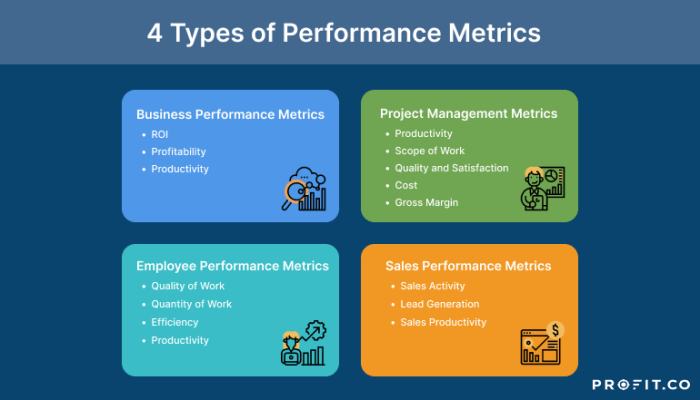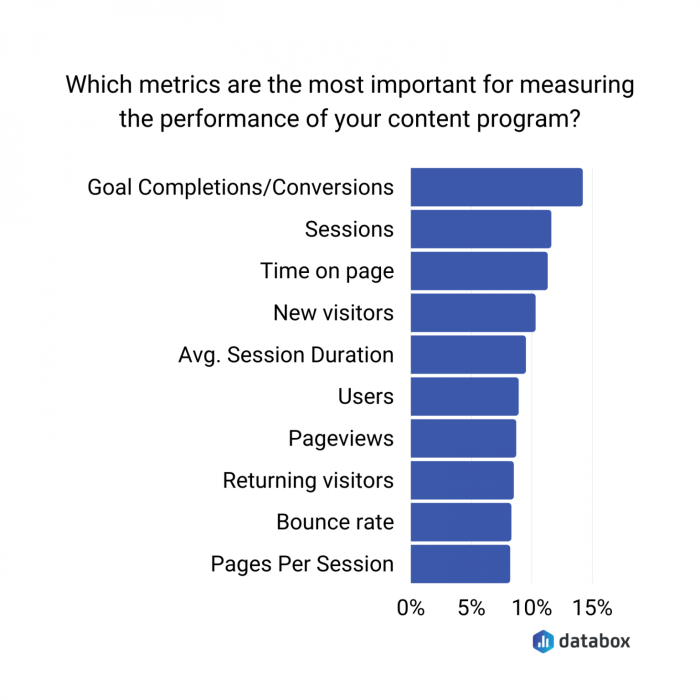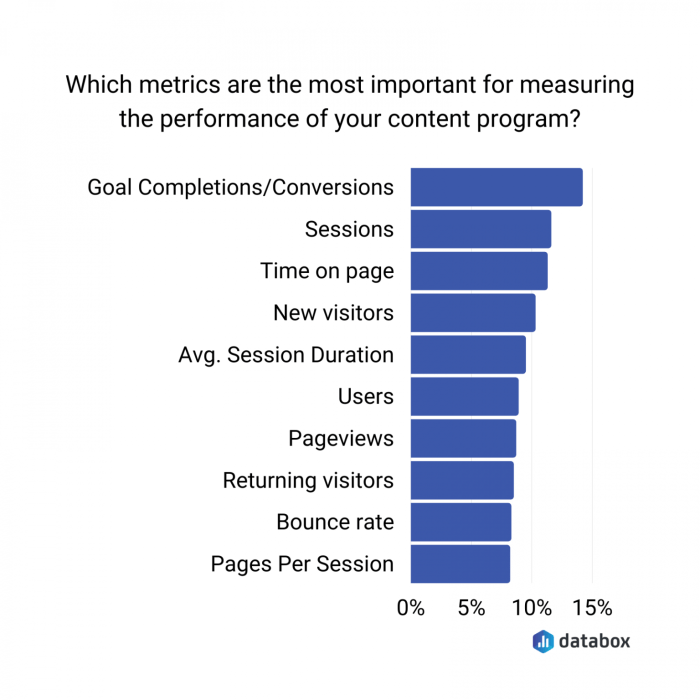Understanding Content Performance Metrics takes center stage, inviting readers into a world of digital marketing insights that are essential for success. From analyzing metrics to optimizing content, this topic delves deep into the core of online marketing strategies.
Importance of Content Performance Metrics
Understanding content performance metrics is crucial for digital marketing strategies as it provides valuable insights into how well your content is resonating with your target audience. By analyzing these metrics, marketers can make informed decisions to optimize their content for better engagement and conversion rates.
Impact on Decision-Making
Content performance metrics can impact decision-making in online marketing campaigns by providing data-driven insights into what is working and what is not. For example, if a particular piece of content is not driving the desired results, marketers can identify the problem areas and make necessary adjustments to improve its performance. On the other hand, if a certain type of content is performing exceptionally well, marketers can replicate that success in future campaigns.
- By tracking metrics like page views, bounce rates, time on page, and click-through rates, marketers can gauge the effectiveness of their content and make data-driven decisions.
- Monitoring social media engagement metrics such as likes, shares, and comments can help marketers understand the impact of their content on social platforms and tailor their strategies accordingly.
- Conversion metrics like conversion rate, cost per acquisition, and return on investment (ROI) can provide valuable insights into the effectiveness of content in driving desired actions from users.
Optimizing Content for Better Engagement and Conversion Rates
Content performance metrics play a crucial role in optimizing content for better engagement and conversion rates. By analyzing these metrics, marketers can identify areas for improvement and make data-driven decisions to enhance the overall performance of their content.
- Optimizing content based on metrics like click-through rates can help improve the effectiveness of call-to-action (CTA) buttons and drive more conversions.
- Analyzing user behavior metrics like session duration and scroll depth can help marketers understand how users interact with their content and make adjustments to increase engagement.
- Testing different content formats, headlines, and visuals based on performance metrics can help marketers identify the most effective strategies for capturing audience attention and driving desired actions.
Types of Content Performance Metrics

Content performance metrics are essential for evaluating the success of content strategies. Different types of metrics provide valuable insights into how content is performing and where improvements can be made. Let’s delve into the various types of content performance metrics and their significance in analyzing content performance.
Traffic Metrics
Traffic metrics measure the amount of traffic your content receives, including the number of visitors, page views, and unique visitors. These metrics help you understand how well your content is attracting an audience and can indicate the effectiveness of your promotional efforts.
Engagement Metrics
Engagement metrics focus on how users interact with your content, such as time spent on page, bounce rate, social shares, and comments. These metrics provide insights into whether your content is resonating with your audience and how engaging it is.
Conversion Metrics
Conversion metrics track the actions users take after interacting with your content, such as signing up for a newsletter, making a purchase, or filling out a contact form. These metrics help you measure the effectiveness of your content in driving desired actions.
Retention Metrics
Retention metrics measure how well your content is retaining users over time, such as returning visitors, repeat purchases, and subscription renewals. These metrics indicate the loyalty of your audience and the long-term impact of your content.
Each type of content performance metric plays a crucial role in evaluating the success of your content strategies. By analyzing traffic, engagement, conversion, and retention metrics, you can gain a comprehensive understanding of how your content is performing and make informed decisions to optimize your content for better results.
Tools for Measuring Content Performance

When it comes to measuring content performance, there are several popular tools that marketers rely on to gather valuable insights and track the effectiveness of their content strategies.
Google Analytics
- Google Analytics is a powerful tool that allows marketers to track website traffic, user behavior, and conversion rates.
- It collects data such as page views, bounce rates, time on page, and goal completions to help marketers understand how their content is performing.
- Marketers can use Google Analytics to identify popular content, track user engagement, and make data-driven decisions to optimize their content strategy.
SEMrush
- SEMrush is a comprehensive marketing toolkit that provides valuable insights into content performance, rankings, and competitor analysis.
- It allows marketers to track positions, analyze backlinks, and monitor social media performance to improve their content strategy.
- Marketers can also conduct site audits, track brand mentions, and discover new content opportunities to enhance their online presence.
Moz, Understanding Content Performance Metrics
- Moz offers a suite of tools that help marketers measure and improve their content performance.
- It provides features such as research, rank tracking, and link analysis to optimize content for search engines.
- Marketers can use Moz to identify issues, track organic search visibility, and improve their content strategy for better online visibility.
Best Practices for Analyzing Content Performance Metrics
When it comes to analyzing content performance metrics, setting meaningful goals is crucial to ensure that your efforts align with your overall marketing objectives. Here are some tips to help you get started:
Setting Meaningful Goals
To set meaningful goals for content performance metrics, start by clearly defining what you want to achieve with your content. Whether it’s increasing website traffic, generating leads, or improving brand awareness, your goals should be specific, measurable, achievable, relevant, and time-bound (SMART). By aligning your content goals with your marketing objectives, you can better track and analyze the success of your content efforts.
- Define specific KPIs (Key Performance Indicators) that will help you measure the success of your content.
- Regularly track and monitor your KPIs to assess whether you’re on track to meet your goals.
- Adjust your content strategy as needed based on the data and insights you gather from your performance metrics.
- Continuously optimize your content to improve performance and achieve your desired outcomes.
Analyzing Content Performance Metrics
Analyzing content performance metrics involves a step-by-step process to extract actionable insights that can inform your content strategy. Here’s a simple guide to help you analyze your content performance metrics effectively:
- Start by collecting data on key metrics such as website traffic, engagement rates, conversion rates, and social media shares.
- Organize your data and identify trends or patterns that can provide valuable insights into how your content is performing.
- Compare your metrics against your predefined goals to evaluate the success of your content strategy.
- Use tools like Google Analytics or social media analytics platforms to gain a deeper understanding of your audience’s behaviors and preferences.
Content Optimization Strategies
Successful content optimization strategies are often based on in-depth analysis of content performance metrics. Here are some examples of strategies that can help you enhance the performance of your content:
By analyzing which types of content resonate most with your audience, you can tailor your content strategy to focus on creating more of the content that drives engagement and conversions.
- Optimize your content for by identifying high-performing s and incorporating them strategically into your content.
- Create a content calendar to ensure consistent publishing and maximize the impact of your content efforts.
- A/B test different variations of your content to determine what resonates best with your audience and drives the desired outcomes.
Challenges in Interpreting Content Performance Metrics: Understanding Content Performance Metrics
Interpreting content performance metrics can be tricky for marketers, as it involves analyzing various data points to make informed decisions. Here are some common challenges faced by marketers when interpreting content performance metrics accurately:
Ambiguity in Data
One of the major challenges is the ambiguity in data, where metrics may not provide a clear picture of how content is performing. For example, a high click-through rate does not always translate to high engagement or conversions. Marketers need to dig deeper and look at additional metrics to get a complete understanding of content performance.
Lack of Context
Another challenge is the lack of context in data interpretation. Marketers need to consider external factors that may impact content performance, such as seasonality, industry trends, or changes in algorithms. Without proper context, they may misinterpret the data and make incorrect assumptions.
Overreliance on Vanity Metrics
Marketers often fall into the trap of focusing on vanity metrics, such as likes, shares, or followers, which may not directly correlate to business objectives. It is essential to prioritize metrics that align with specific goals and objectives to avoid misinterpreting the data and making ineffective decisions.
Confirmation Bias
Confirmation bias can also pose a challenge in interpreting content performance metrics. Marketers may have preconceived notions about what success looks like, leading them to interpret data in a way that confirms their beliefs. To overcome this challenge, it is crucial to approach data analysis with an open mind and be willing to reassess assumptions.
Real-World Example:
One real-world example of misinterpreting content performance metrics is when a company focuses solely on the number of website visitors without considering the bounce rate. They may celebrate high traffic numbers, thinking it indicates success, but in reality, the high bounce rate suggests that visitors are not engaging with the content effectively. This misinterpretation can lead to misguided marketing strategies and wasted resources.






